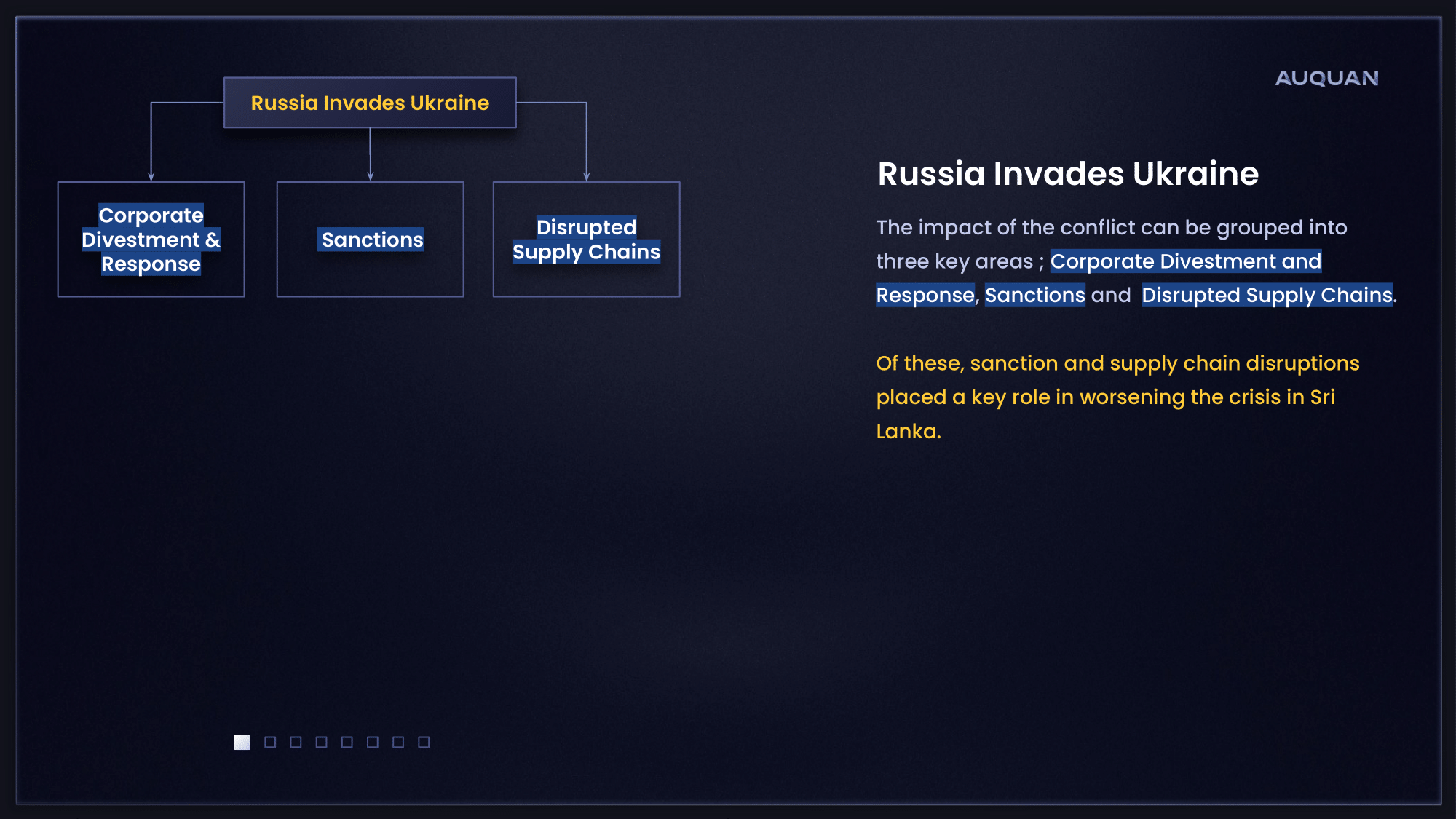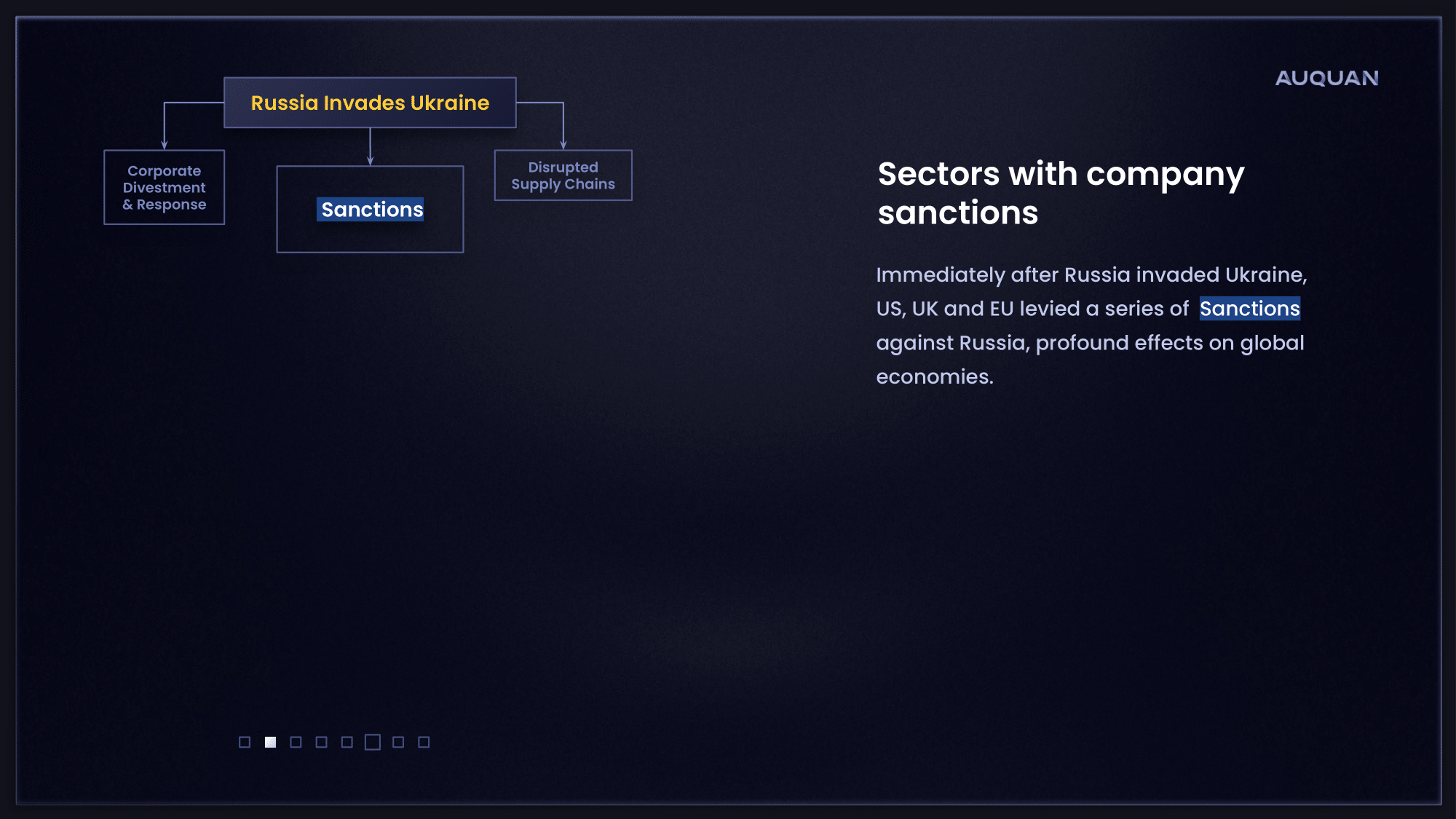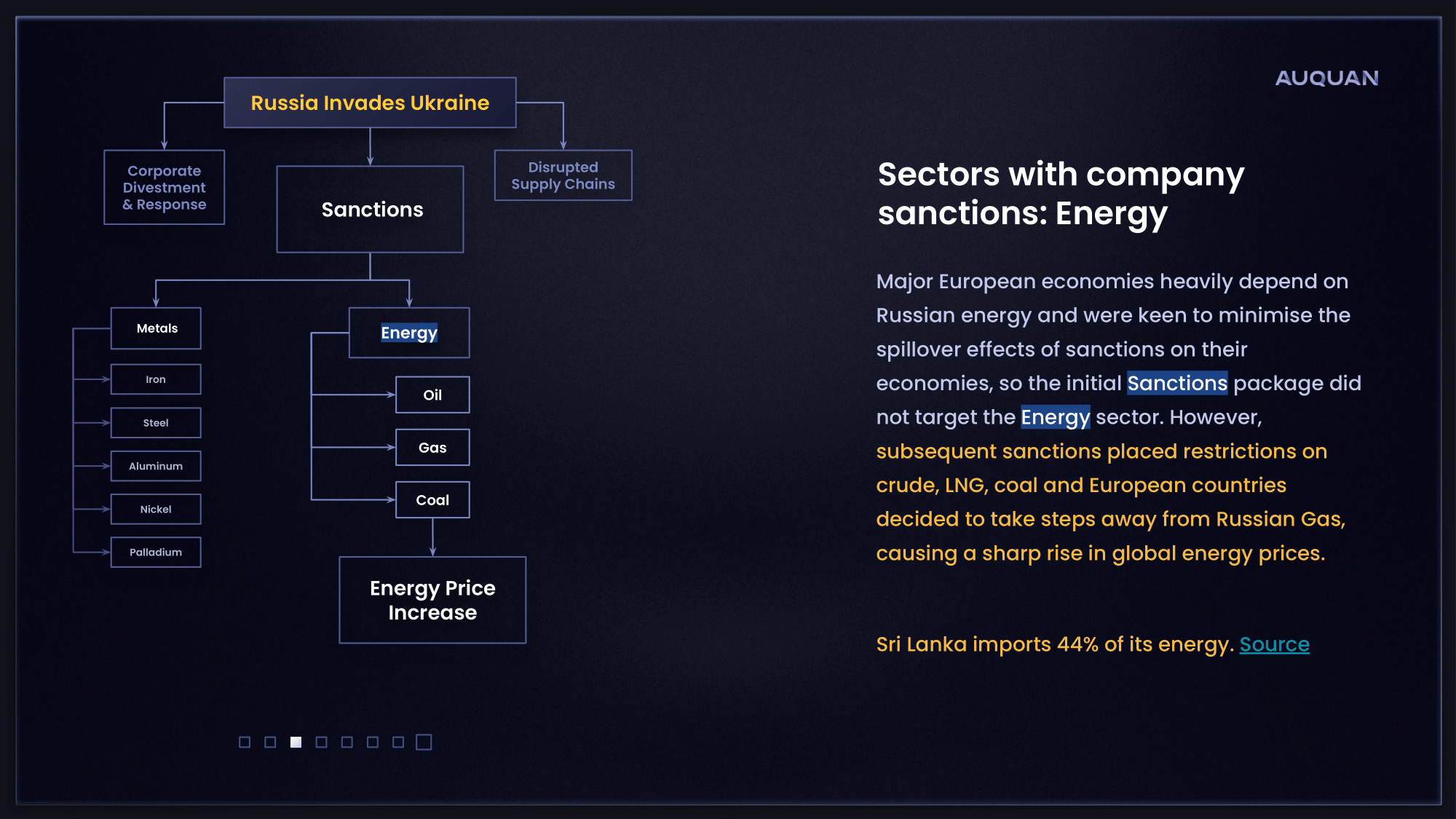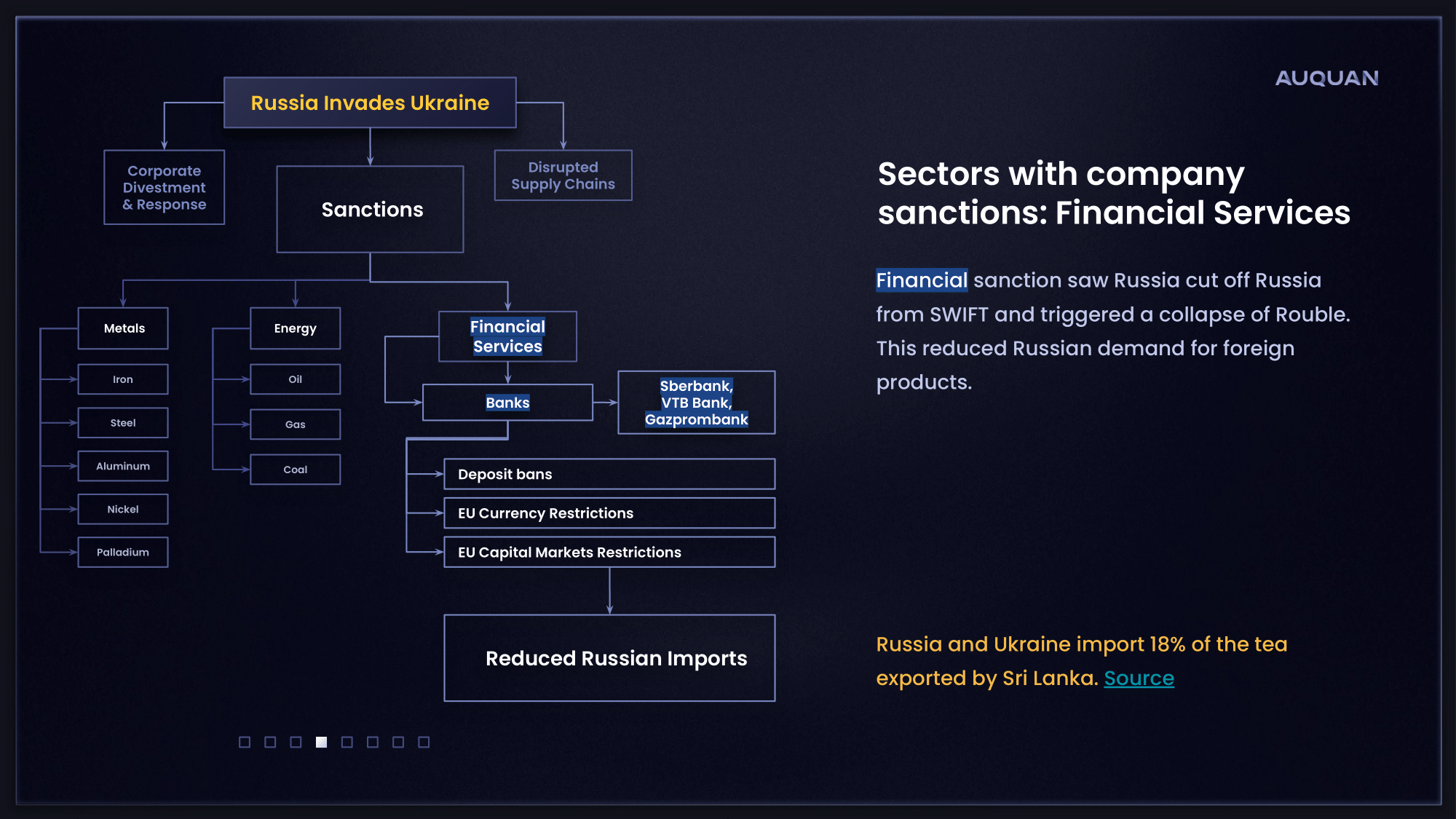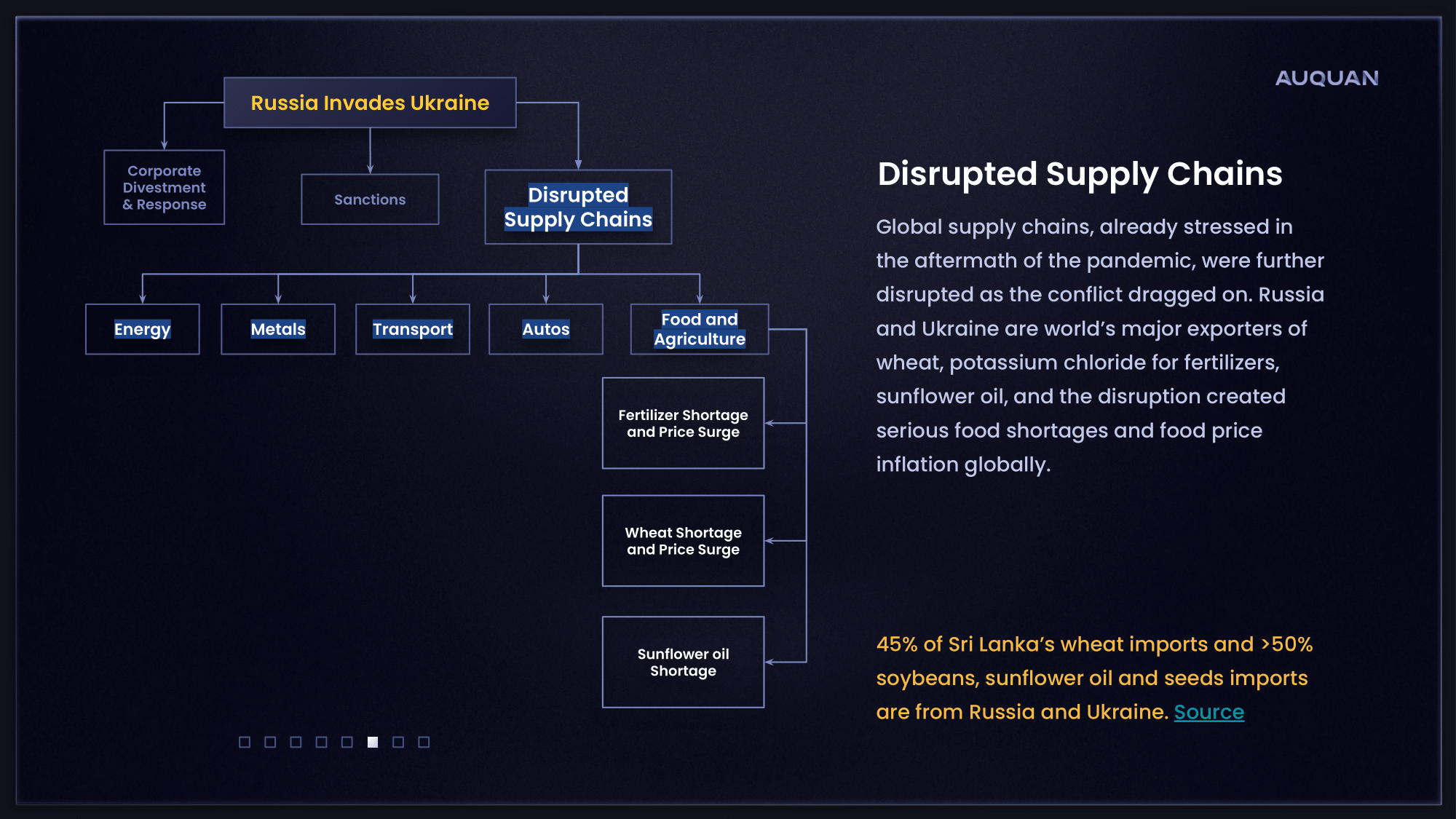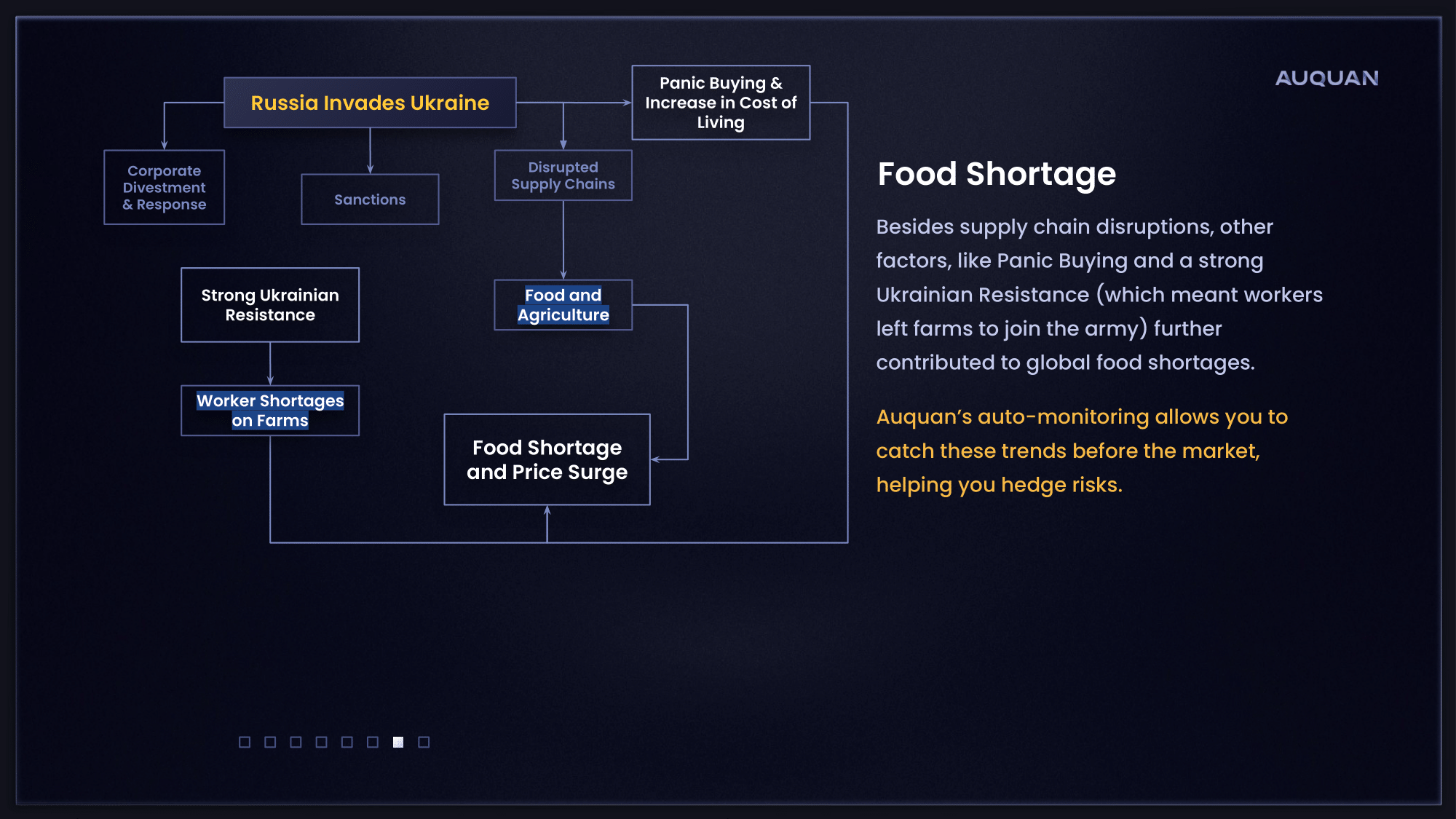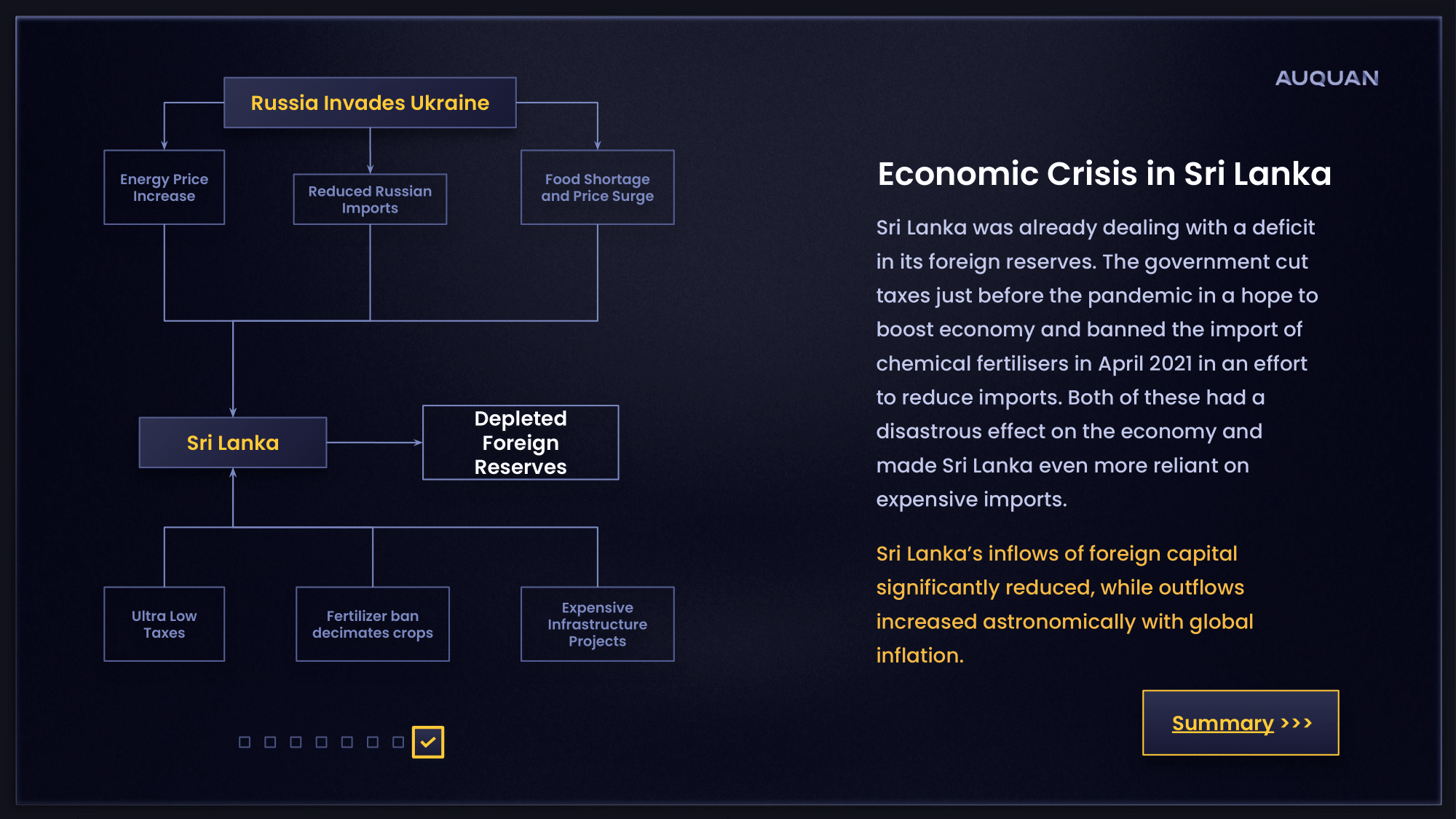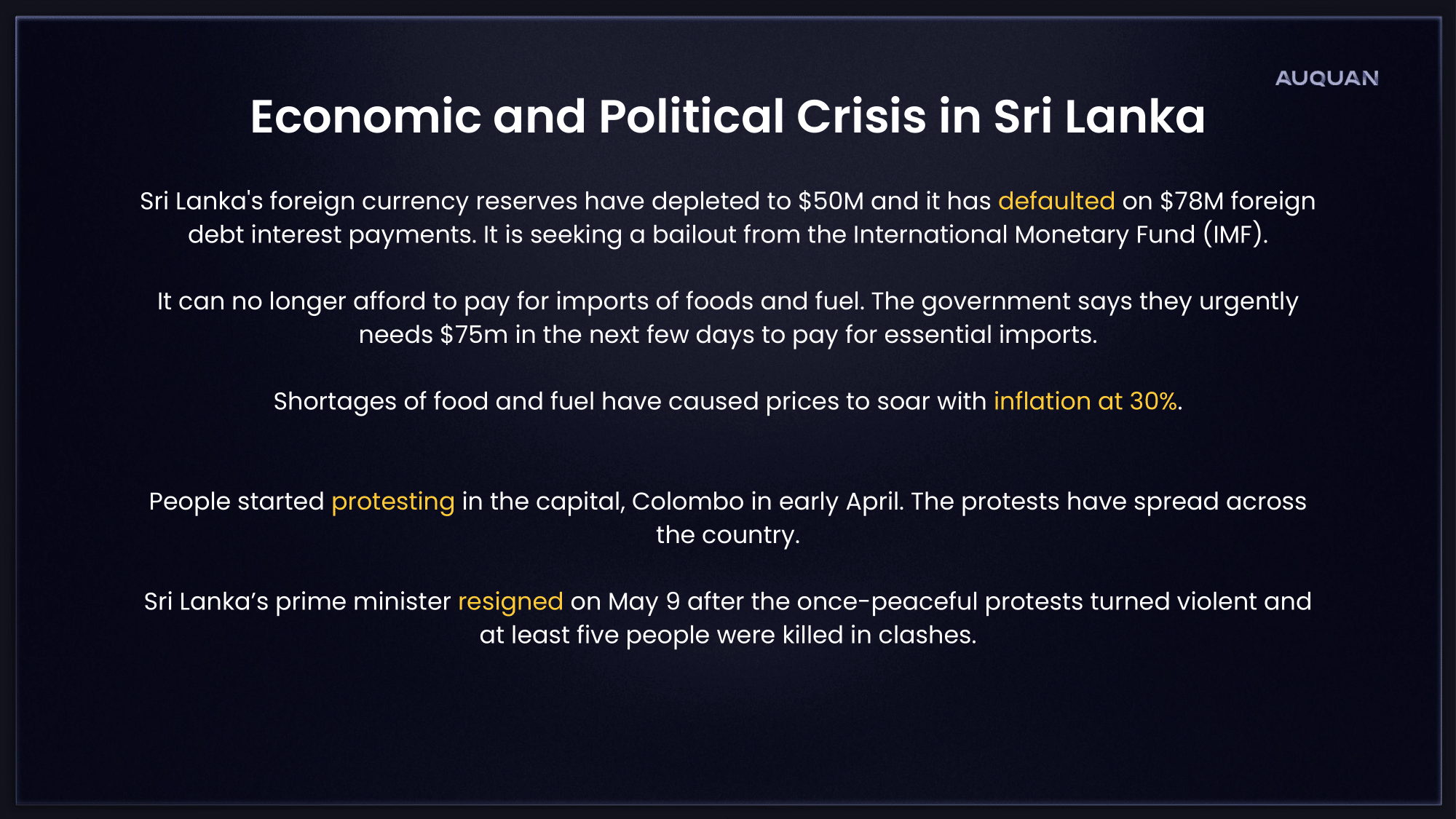Case Study: Sri Lanka Crisis
Triggered by Russia's war on Ukraine, Sri Lanka is currently at the midst of the worst economic crisis since its independence.
This case study explores how Auquan's Portfolio Activity Monitor (PAM) identifies and tracks the effects of Russisa-Ukraine War on the economic and political crisis in Sri Lanka. The crisis in Sri Lanka matters way beyond its borders, which could be a potential indicator for similar trends across the developing world.
Sri Lanka's economy is facing a dire collapse, the country last week defaulted on its debt for the first time in its history.
The citizens are facing extreme shortages of food & fuel, having to queue up for hours in the extreme heat while shops have been forced to close and farmers are without fertilizer for two seasons. The cities face frequent power cuts for 10-13 hours daily and the civil protests, driven by anger with government, have turned violent in the last few weeks.
Experts see Sri Lanka’s situation has been years in the making as a product of its government’s missteps, but it was exacerbated by the Russia-Ukraine conflict. We had previously written about the Russia-Ukraine Crisis triggering knock-on political turmoil and instabilities in developing countries because of elevated inflation and declining economic security.
Here we take a closer look at what accelerated the crisis in Sri Lanka, as it may be a blueprint for similar unrests in other developing countries like Bangladesh, Tunisia, Brazil or the MENA region.
